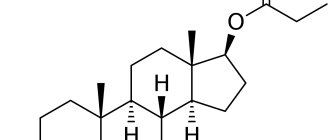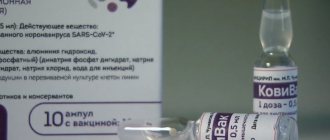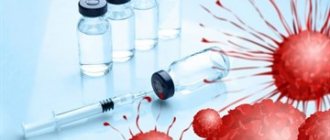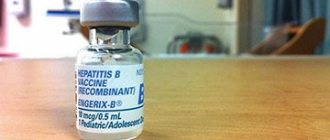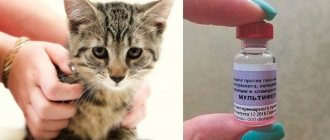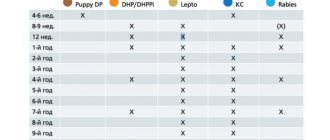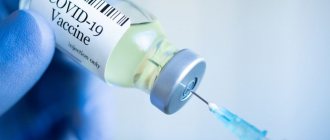Vaccination and types of vaccines
Vaccination is a method of creating protective immunity (immunity to certain pathogenic microorganisms) with the help of drugs (vaccines) in order to form immunological memory to the antigens of the causative agent of the disease, bypassing the stage of development of this disease. Vaccines contain biomaterial - pathogen antigens or toxoids. The creation of vaccines became possible when scientists learned to cultivate pathogens of various dangerous diseases in the laboratory. And the variety of methods for creating vaccines ensures their varieties and allows them to be grouped according to manufacturing methods.
Types of vaccines:
- Live weakened
(attenuated) - where the virulence of the pathogen is reduced in various ways.
Such pathogens are cultivated in environmental conditions unfavorable for their existence and, through multiple mutations, lose their initial degree of virulence. Vaccines based on this type are considered the most effective. Attenuated vaccines provide a long-lasting immune effect. This group includes vaccines against measles, smallpox, rubella, herpes, BCG, polio (Sabin vaccine). - Killed
– contain pathogens of microorganisms killed in various ways. Their effectiveness is lower than that of attenuated ones. Vaccines obtained by this method do not cause infectious complications, but may retain the properties of a toxin or allergen. Killed vaccines have a short-term effect and require repeated immunization. These include vaccines against cholera, typhoid, whooping cough, rabies, and polio (Salk vaccine). Such vaccines are also used to prevent salmonellosis, typhoid fever, etc. - Antitoxic
- contain toxoids or toxoids (inactivated toxins) in combination with an adjuvant (a substance that enhances the effect of individual components of the vaccine). A single injection of this vaccine provides protection against multiple pathogens. This type of vaccine is used against diphtheria and tetanus. - Synthetic
- an artificially created epitope (part of an antigen molecule that is recognized by agents of the immune system) combined with an immunogenic carrier or adjuvant. These include vaccines against salmonellosis, yersiniosis, foot-and-mouth disease, and influenza. - Recombinant
- virulence genes and protective antigen genes (a set of epitopes that cause the most powerful immune response) are isolated from the pathogen, the virulence genes are removed, and the protective antigen gene is introduced into a safe virus (most often the vaccinia virus). This is how vaccines against influenza, herpes, and vesicular stomatitis are made. - DNA vaccines
- A plasmid containing the gene for a protective antigen is injected into the muscle, in the cells of which it is expressed (converted into the final result - protein or RNA). This is how vaccines against hepatitis B were created. - Idiotypic
(experimental vaccines) - Instead of an antigen, anti-idiotypic antibodies (antigen imitators) are used, reproducing the desired configuration of the epitope (antigen).
Adjuvants are substances that complement and enhance the effect of other components of the vaccine, providing not only a general immunostimulating effect, but also activating a specific type of immune response for each adjuvant (humoral or cellular).
- Mineral adjuvants (aluminum alum) enhance phagocytosis;
- Lipid adjuvants – cytotoxic Th1-dependent type of immune system response (inflammatory form of T-cell immune response);
- Virus-like adjuvants are a cytotoxic Th1-dependent type of immune system response;
- Oil emulsions (vaseline oil, lanolin, emulsifiers) – Th2- and Th1-dependent type of response (where thymus-dependent humoral immunity is enhanced);
- Nanoparticles containing antigen - Th2- and Th1-dependent type of response.
Some adjuvants due to their reactogenicity (ability to cause side effects) were prohibited for use (Freund's adjuvants).
Vaccines are medications that, like any other drug, have contraindications and side effects. In this regard, there are a number of rules for using vaccines:
- Preliminary skin testing;
- The state of health of the person at the time of vaccination is taken into account;
- A number of vaccines are used in early childhood and therefore they must be carefully checked for the safety of the components included in their composition;
- For each vaccine, an administration schedule is followed (frequency of vaccination, season for its administration);
- The dose of the vaccine and the interval between the time of its administration are maintained;
- There are routine vaccinations or vaccinations for epidemiological reasons.
Adverse reactions and complications after vaccination :
- Local reactions
– hyperemia, tissue swelling in the area of vaccine administration; - General reactions
– fever, diarrhea; - Specific complications
- characteristic of a particular vaccine (for example, keloid scar, lymphadenitis, osteomyelitis, generalized infection with BCG; for oral polio vaccine - convulsions, encephalitis, vaccine-associated polio and others); - Nonspecific complications
- immediate reactions (edema, cyanosis, urticaria), allergic reactions (including Quincke's edema), proteinuria, hematuria.
What is the difference between a vaccine and a serum?
Serum and vaccine are drugs that were created to increase the body's resistance to pathogenic microflora. Depending on which vaccination is given, the mechanism for forming immunity will differ.
Immune serum is obtained from blood plasma that has been taken from an immunized organism. This substance contains antibodies that fight the pathogen.
A vaccine is a substance of biological origin. With its help, the body begins to produce antibodies to the antigen. The drug contains the causative agent of the disease. The pathogen may be weakened or dead.
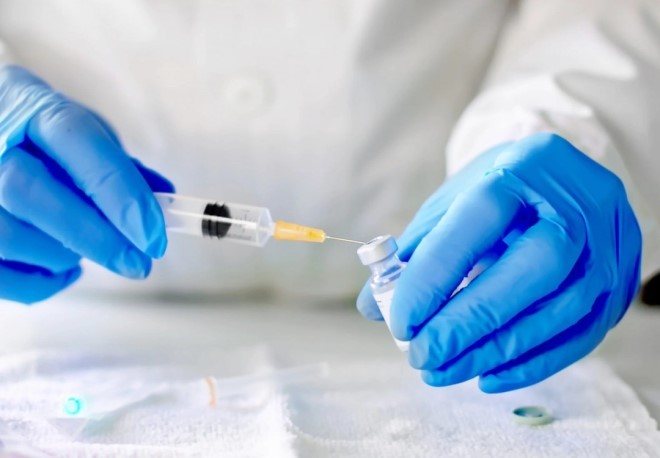
Differences in indications for administration
Because the vaccine stimulates the production of antibodies against the pathogen, it is recommended for prophylactic use. At the moment when the body encounters the pathogen, it will already have immunity. Therefore, vaccination is recommended before an epidemic begins.
If the body has become infected, it needs help in the fight against pathogenic microflora. Therefore, in such a situation, a serum that already has antibodies is needed. If a patient who is already infected is given the vaccine, his condition will worsen.
How does the effect on the body differ?
The difference between a vaccine and serum is that when administered, the former artificially stimulates the immune system. Foreign substances included in the drug do not have a harmful effect. Therefore, the body begins to recognize and actively fight pathogenic microflora. A positive result from vaccination does not occur instantly. The effect of the drug is observed after several weeks (depending on the pathogen).
Serum injections give quick results. After the first injection, the patient’s condition begins to improve.
Difference in duration
With the artificial formation of immunity, i.e. when the body itself produces antibodies to the pathogen (after vaccination), resistance to foreign microflora can last from 1 to several years. The duration of action will depend on the type of infection and the individual characteristics of the body.
The healing serum quickly produces a positive therapeutic effect, but the patient’s resistance to pathogenic microflora after recovery is short. In most cases, the duration of action of the drug lasts no more than 2 months.
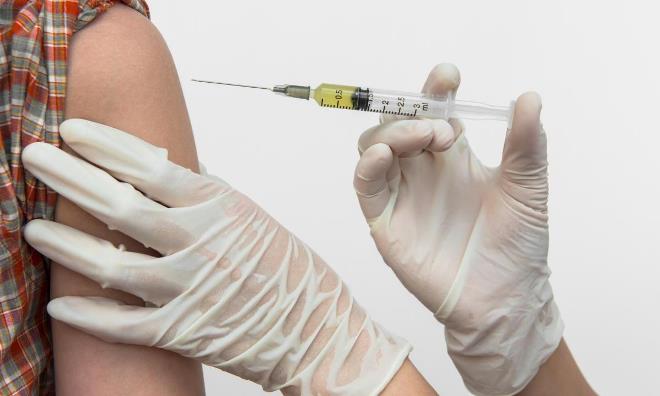
Differences in efficiency
Immunobiological drugs cannot be compared based on efficacy criteria. In a critical situation, when the body has been exposed to pathogenic microflora and is not able to quickly cope with the pathogen on its own, an injection of serum can save a life, for example, after a poisonous snake bite. The antidote has a short-term effect, but it is enough for the victim’s condition to stabilize and the healing process to begin.
Vaccination against hepatitis, tetanus, diphtheria, seasonal flu and other diseases allows a person to take care of his health in advance. If you get vaccinated before the outbreak of an epidemic, then its positive effect on the body at the time of the peak of disease activity will be no less valuable than the effect of serum introduced into the body of a victim, for example, from a snake bite.
Vaccines. Definition, classification. History of the development of vaccination methods
Features of obtaining viral vaccines
4.Vaccines of plant origin
4. Anatoxins. Technology for producing toxoids (discussed in lecture No. 2)
Requirements for vaccines.
Introduction
Preventing the spread of infections through immunization is without a doubt one of mankind's greatest medical achievements. Vaccines currently prevent up to 3 million deaths annually. Over the 20th century, the average life expectancy of people has increased by about 30 years, which is largely due to mass vaccination.
Immunoprophylaxis is the use of immunological patterns to create artificial acquired immunity (active or passive).
For immunoprophylaxis use:
1. antigen drugs (vaccines, toxoids), when administered, artificial active immunity is formed in humans and animals;
2. antibody preparations (immune serums), with the help of which artificial passive immunity is created
Vaccines. Modern classification of vaccine preparations.
Vaccines are biological products that promote the creation of active immunity in the body of vaccinated people or animals..
Vaccines are obtained from pathogenic microorganisms themselves and their metabolic products (toxins).
Vaccines are administered for preventive (and less often for therapeutic) purposes.
E. Jenner received the first vaccine at the end of the 18th century. from the contents of smallpox capsules of calves (vacca - cow). Later, the vaccine was prepared on FE. Smallpox has been eradicated throughout the globe.
The doctrine of vaccines was developed by L. Pasteur. He proposed the attenuation of pathogens of infectious diseases under the influence of changes in external conditions.
Vaccines are classified according to the method of preparation:
1. Live vaccines are weakened or hereditarily modified pathogens. Prepared from avirulent strains of the pathogen. Essentially, they reproduce in the human body a mild infection, but not an infectious disease, during which the same defense mechanisms are formed and activated as during the development of infectious immunity.
They create intense and long-lasting immunity.
Not only live vaccines, but also killed vaccines, and even individual antigens have immunogenic properties.
2. Killed vaccines – obtained from pathogens killed in various ways. They are prepared from microorganisms inactivated by heating, UV rays, and chemicals under conditions that preclude denaturation of antigens. Killed vaccines are: heated, phenol, formaldehyde, alcohol, acetone, UV, ultrasound, etc.
Anatoxins - (toxins) are antigenic preparations obtained from microbial cell exotoxins, treated with formaldehyde and high temperature C0. In this case, the toxoid is devoid of the toxicity of the original exotoxin, but retains its antigenic properties. When toxoids are administered, antitoxic immunity is formed, since they induce the synthesis of antitoxic antibodies - antitoxins.
Chemical vaccines are various chemically extracted components of a microbial cell. Contains chemically pure pathogen antigens. They have weak immunogenicity.
5. Genetically engineered vaccines.
They are developed in virology, and hybrid vaccine strains are created. The genes responsible for its main antigenic markers are introduced into the genome of a known vaccine strain.
6. Combination vaccines . They are preparations consisting of a microbial antigenic component and synthetic polyions - powerful stimulators of the immune response.
Associated vaccines . They are a complex of killed vaccine and toxoid.
Here it is appropriate to recall the antigenic structure of a microbial cell.
General information about immunity. Vaccines, serums, gamma globulins
Immunity –
This is the body's immunity to infectious agents and foreign substances. Such agents are most often microbes and the poisons they secrete, toxins. Immunity to infectious diseases comes in several forms. There are natural and artificial immunity.
Natural
immunity occurs naturally without conscious human intervention. It can be congenital or acquired.
Congenital species
immunity is determined by the innate properties of a person or a given animal species, which are inherited. Thus, it is known that people do not suffer from cattle plague and chicken cholera, and they do not suffer from typhoid or typhus.
Acquired
immunity occurs in the event of an infectious disease. After some diseases it persists for a long time, sometimes throughout life (smallpox, typhoid fever, etc.), and after others it lasts for a short time (influenza).
Artificial
Immunity is created by introducing a vaccine or serum into the body to prevent infectious diseases. It is always acquired.
Immunity can be active or passive.
Active
Immunity is developed in the body actively as a result of an infectious disease or after the administration of a vaccine.
Passive
immunity occurs after the introduction of serum containing specific antibodies into the body, or by transfer of antibodies from mother to fetus through the placenta. It is known that children in the first months of life have passive immunity to measles, scarlet fever, and diphtheria if the mother is immune to these diseases.
The duration of active immunity can be from six months to 5 years, and after some diseases (smallpox, typhoid fever) immunity can last a lifetime. Passive immunity lasts 2-3 weeks after administration of the serum, and when receiving antibodies through the placenta - up to several months.
Immunity is provided by protective mechanisms that prevent pathogenic agents from entering the body, and if they have penetrated, they cause their death. Such mechanisms include the protective properties of the skin, mucous membranes, the bactericidal effect of saliva, tears, gastric and intestinal juices, and the body’s lymphoid system.
Vaccines
(from the Latin Vaccinus - cow) - these are preparations obtained from microbes, viruses and their metabolic products and used for active immunization of people and animals for preventive and therapeutic purposes.
Immunization was started by the English doctor E. Jenner, who in 1796. inoculated the child with cowpox, after which he became immune to smallpox.
A major contribution to the development of vaccination was made by the French scientist Louis Pasteur, who developed methods to weaken the virulence of microbes and created vaccines against rabies and anthrax. Russian scientist N.F. Gamaleya established the possibility of creating chemical vaccines, as well as vaccines from killed microbes.
Modern medicine has vaccines against many dangerous infectious diseases (plague, cholera, tuberculosis, diphtheria, anthrax, tularemia, tetanus, smallpox, polio, influenza, encephalitis, mumps, etc.)
Vaccines are divided into live, killed, toxoid and chemical. To prepare live vaccines, strains of pathogenic microbes with weakened virulence are used, i.e. deprived of the ability to cause disease, but retaining the ability to multiply in the body of vaccinated people and cause a benign vaccine process (BCG - vaccine against tuberculosis, anti-brucellosis vaccine, against viral hepatitis A, etc.). Live vaccines provide lasting immunity.
Killed vaccines are obtained by heating bacteria and viruses, other physical effects (ultraviolet or ionizing radiation), and by treatment with chemicals (phenol, alcohol solutions, formaldehyde). Killed vaccines are most often administered subcutaneously or intramuscularly (against intestinal infections, whooping cough, therapeutic vaccine against brucellosis).
Chemical vaccines are prepared by extracting the main antigens that have immunogenic properties from microbial bodies (polyvaccine)

Vaccines can be administered in different ways: intramuscularly (measles), subcutaneously (typhoid fever, paratyphoid fever, dysentery, cholera, plague, etc.), cutaneously (smallpox, tularemia, tuberculosis, anthrax), into the nose (influenza) or through the mouth ( polio).
Routine vaccination is carried out in a certain sequence. Thus, newborns receive the vaccine against tuberculosis (BCG), then children are vaccinated against diphtheria, tetanus and whooping cough, and later against measles and polio. Routine vaccination of the population made it possible to eliminate such infectious diseases as smallpox, plague, and tularemia. The incidence of other infectious diseases has been reduced tens and hundreds of times.
Immune serums are animal or human blood products that contain antibodies. Used for diagnosis, treatment and prevention of various diseases. After administration of immune serum, passive immunity occurs, which lasts up to 3-4 weeks. The administration of immune serum is carried out according to the method of A.M. Often, which allows you to desensitize the body: first, 0.1 ml is injected subcutaneously, after 30 minutes - 0.2 ml, and after 1-2 - intramuscularly the rest of the dose of serum.
Vaccines, definition. Classification. Requirements for vaccine products
A vaccine is a medical product designed to create immunity to infectious diseases.
Vaccine classifications:
1. Live vaccines are preparations in which the active principles are strains of pathogenic bacteria that have been weakened in one way or another, have lost their virulence, but have retained their specific antigenicity.
Examples of such vaccines are BCG and smallpox vaccine.
2. Inactivated (killed) vaccines are preparations that, as an active principle, include cultures of pathogenic viruses or bacteria killed by chemical or physical means (cellular, virion) or antigen complexes extracted from pathogenic microbes containing projective antigens (subcellular, subvirion) vaccines).
Preservatives and adjuvants are sometimes added to drugs.
Molecular vaccines - in them the antigen is in molecular form or even in the form of fragments of its molecules that determine the specificity, i.e. in the form of epitopes, determinants.
Corpuscular vaccines - containing a protective antigen
3.Anatoxins are among the most effective drugs. The principle of production is that the toxin of the corresponding bacterium in molecular form is converted into a non-toxic form that retains its antigenic specificity by exposure to 0.4% formaldehyde at 37t for 3-4 weeks, then the toxoid is concentrated, purified, and adjuvants are added.
4. Synthetic vaccines. Epitope molecules themselves do not have high immunogenicity; to increase their antigenic properties, these molecules are cross-linked with a polymer large-molecular harmless substance, and sometimes adjuvants are added.
5.Associated vaccines are preparations that include several different antigens.
Requirements for modern vaccines:
Immunogenicity;
Low reactogenicity (allergenicity);
Should not be teratogenic or oncogenic;
The strains from which the vaccine is prepared must be genetically stable;
Long shelf life;
Manufacturability of production;
Simplicity and accessibility to use.
What is the importance of therapeutic serums and preventive vaccinations in the modern world?
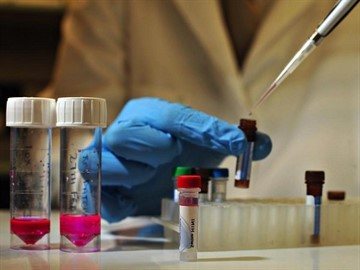
The appearance of vaccines and serums is a consequence of concern for the own health of physicians working with patients infected with infectious diseases. For many years, medical representatives were busy searching for remedies that could give them protection against cholera, smallpox, anthrax and rabies.
Research got off the ground only at the end of the 19th century, when L. Pasteur and E. Jenner conducted the first studies aimed at testing the first medicines containing living microbes.
The scientific activity of scientists gave a positive result and was the start for the development of a powerful medical industry. Since then, specialists have created many drugs designed to prevent and treat dangerous infections. These included vaccines against various infections, as well as serums that are actively used in modern medicine.
The use of vaccines and serum has made a real breakthrough in the field of medicine. Thanks to the use of such compounds, it was possible to reduce morbidity by tens of times and reduce the percentage of child mortality and deaths among adults caused by infectious diseases.
Characteristics of vaccines
1.Vaccine classification
2.Live vaccines
3.Killed vaccines
4.Combination vaccines
1 . Based on their purpose, vaccines are divided into preventive and therapeutic.
Based on the nature of the microorganisms from which they are created, wakiins are:
• bacterial;
• viral;
• rickettsial.
There are mono-
and
polyvaccines -
prepared respectively from one or more pathogens.
according to the method of preparation :
• alive;
• killed;
• combined.
To increase immunogenicity to vaccines
sometimes various types
of adjuvants
(aluminum-potassium alum, aluminum hydroxide or phosphate, oil emulsion), creating a depot of antigens or stimulating phagocytosis and thus increasing the foreignness of the antigen for the recipient.
2. Live vaccines
contain
live attenuated strains of pathogens with sharply reduced virulence
or
strains of microorganisms that are non-pathogenic to humans and closely related to the pathogen in antigen terms (divergent strains).
These include recombinant
(genetically engineered) vaccines containing vector strains of non-pathogenic bacteria/viruses (genes responsible for the synthesis of protective antigens of certain pathogens have been introduced into them using genetic engineering methods).
Examples of genetically engineered vaccines include the hepatitis B vaccine, Engerix B, and the rubella measles vaccine, Recombivax NV.
Since live vaccines
contain strains of pathogenic microorganisms with sharply reduced virulence, then, in essence, they
reproduce in the human body a mild infection,
but not an infectious disease, during which the same defense mechanisms are formed and activated as during the development of post-infectious immunity.
In this regard, live vaccines, as a rule, create quite intense and long-lasting immunity.
On the other hand, for the same reason, the use of live vaccines against the background of immunodeficiency states (especially in children) can cause severe infectious complications.
For example, a disease defined by clinicians as BCGitis after administration of the BCG vaccine.
Live vakiins are used for the prevention of:
• tuberculosis;
• especially dangerous infections (plague, anthrax, tularemia, brucellosis);
• influenza, measles, rabies (anti-rabies);
• mumps, smallpox, polio (Seibin-Smorodintsev-Chumakov vaccine);
• yellow fever, rubella measles;
• Q fever.
An interval of at least 1 month is recommended between administrations of live vaccines, otherwise severe adverse reactions are possible and the immune response may be reduced.
3. Killed vaccines contain killed pathogen cultures
(whole cell, whole virion). They are prepared from microorganisms inactivated by heating (heated), ultraviolet rays, chemical substances (formalin - formol, phenol - carbolic, alcohol - alcohol, etc.) under conditions that exclude denaturation of antigens.
The immunogenicity of killed vaccines is lower than that of live ones. Therefore, the immunity they evoke is short-lived and relatively less intense. Killed vakiins are used for the prevention of:
• whooping cough, leptospirosis,
• typhoid fever, paratyphoid A and B,
• cholera, tick-borne encephalitis,
• polio (Salk vaccine),
hepatitis A.
To killed vaccines
Also include
chemical vaccines
containing certain chemical components of pathogens that are immunogenic (subcellular, subvirion).
Since they contain only individual components of bacterial cells or virions that are directly immunogenic, chemical vaccines are less reactogenic and can be used even in preschool children.
Anti-idiotypic drugs are also known
vaccines that are also classified as killed vaccines. These are antibodies to one or another idiotype of human antibodies (anti-antibodies). Their active center is similar to the determinant group of the antigen that caused the formation of the corresponding idiotype.
4. Combined vaccines include artificial vaccines.
They are preparations consisting of a microbial antigenic component
(usually isolated and purified or artificially synthesized antigen of the pathogen) and
synthetic polyions
(polyacrylic acid, etc.) - powerful stimulators of the immune response.
They differ from chemically killed vaccines in the content of these substances. The first such domestic vaccine is the influenza polymer-subunit vaccine (“Grippol”),
developed at the Institute of Immunology, has already been introduced into Russian healthcare practice.
For specific prevention of infectious diseases whose pathogens produce exotoxin, toxoids are used.
Anatoxin -
it is an exotoxin, devoid of toxic properties, but retaining antigenic properties.
Unlike vaccines, when used in humans, antimicrobial immunity
antitoxic immunity
antitoxins.
Currently used:
• diphtheria;
• tetanus;
• botulinum;
• staphylococcal toxoids;
• Cholerogen-anatoxin.
Vaccines containing bacterial antigens and toxoids are called associated vaccines. Examples of associated vaccines are
— DTP vaccine
(adsorbed pertussis-diphtheria-tetanus vaccine), in which the pertussis component is represented by killed pertussis vaccine, and diphtheria and tetanus - by the corresponding toxoids;
— TAVTe vaccine,
containing O-antigens of typhoid, paratyphoid A- and B-bacteria and tetanus toxoid;
typhoid chemical vaccine
with sextaanatoxin (a mixture of toxoids of Clostridium botulism types A, B, E, Clostridium tetanus, Clostridium perfringens type A and edematiens - the last 2 microorganisms are the most common causative agents of gas gangrene), etc.
At the same time, DPT (diphtheria-tetanus toxoid), often used instead of DTP when vaccinating children, is simply a combination drug and not an associated vaccine, since it contains only toxoids.
1
.
Based on their purpose,
vaccines are divided into preventive and therapeutic.
According to the nature of the microorganisms from which they are created,
There are types of wakiins:
• bacterial;
• viral;
• rickettsial.
There are mono-
and
polyvaccines -
prepared respectively from one or more pathogens.
By cooking method
vaccines are distinguished:
• alive;
• killed;
• combined.
To increase immunogenicity to vaccines
sometimes various types
of adjuvants
(aluminum-potassium alum, aluminum hydroxide or phosphate, oil emulsion), creating a depot of antigens or stimulating phagocytosis and thus increasing the foreignness of the antigen for the recipient.
2.
Live vaccines
contain
live attenuated strains of pathogens with sharply reduced virulence
or
strains of microorganisms that are non-pathogenic to humans and closely related to the pathogen in antigen terms (divergent strains).
These also include
recombinant
(genetically engineered) vaccines containing vector strains of non-pathogenic bacteria/viruses (genes responsible for the synthesis of protective antigens of certain pathogens have been introduced into them using genetic engineering methods). Examples of genetically engineered vaccines include the hepatitis B vaccine, Engerix B, and the rubella measles vaccine, Recombivax NV.
Since live vaccines
contain strains of pathogenic microorganisms with sharply reduced virulence, then, in essence, they
reproduce in the human body a mild infection,
but not an infectious disease, during which the same defense mechanisms are formed and activated as during the development of post-infectious immunity.
In this regard, live vaccines, as a rule, create quite intense and long-lasting immunity.
On the other hand, for the same reason, the use of live vaccines against the background of immunodeficiency states (especially in children) can cause severe infectious complications.
For example, a disease defined by clinicians as BCGitis after administration of the BCG vaccine.
Live vakiins are used for the prevention of:
• tuberculosis;
• especially dangerous infections (plague, anthrax, tularemia, brucellosis);
• influenza, measles, rabies (anti-rabies);
• mumps, smallpox, polio (Seibin-Smorodintsev-Chumakov vaccine);
• yellow fever, rubella measles;
• Q fever.
An interval of at least 1 month is recommended between administrations of live vaccines, otherwise severe adverse reactions are possible and the immune response may be reduced.
3.
Killed vaccines
contain killed cultures of pathogens
(whole cell, whole virion).
They are prepared from microorganisms inactivated by heating (heated), ultraviolet rays, chemical substances (formalin - formol, phenol - carbolic, alcohol - alcohol, etc.) under conditions that exclude denaturation of antigens. The immunogenicity of killed vaccines is lower than that of live ones. Therefore, the immunity they evoke is short-lived and relatively less intense. Killed vakiins are used for the prevention of:
• whooping cough, leptospirosis,
• typhoid fever, paratyphoid A and B,
• cholera, tick-borne encephalitis,
• polio (Salk vaccine),
hepatitis A.
To killed vaccines
Also include
chemical vaccines
containing certain chemical components of pathogens that are immunogenic (subcellular, subvirion).
Since they contain only individual components of bacterial cells or virions that are directly immunogenic, chemical vaccines are less reactogenic and can be used even in preschool children. Anti-idiotypic drugs are also known
vaccines that are also classified as killed vaccines. These are antibodies to one or another idiotype of human antibodies (anti-antibodies). Their active center is similar to the determinant group of the antigen that caused the formation of the corresponding idiotype.
4.To combination vaccines
include
artificial vaccines.
They are preparations consisting of a microbial antigenic component
(usually isolated and purified or artificially synthesized antigen of the pathogen) and
synthetic polyions
(polyacrylic acid, etc.) - powerful stimulators of the immune response.
They differ from chemically killed vaccines in the content of these substances.
